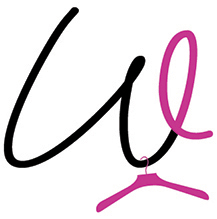 |
||
|
WARDROBE PHOTOGRAPHY TIPS |
||
| Written By Dave Suarez | ||
| www.davesuarez.com | ||
| www.facebook.com/davesuarezphotography | ||
|
Ideally you want to capture photos that are very color accurate and are sharp enough to show the clothes texture. Here are some tips from a professional photographer. The Camera You can get away with using a good quality phone camera but using a good point and shoot camera or a DSLR is going to give you best results. Background Try to use a neutral background. Fill the frame with the item with as little background in the image as possible. Lighting The brighter the light, the sharper your photos are going to be. Taking photos by a large window on a sunny day is a great choice. Set up your clothes so that the light is falling at a 45-90 degree angle instead of falling straight on. This will enhance the detail and texture of the clothing. If you are unable to use window light for your photos, try to use as bright a lamp as possible. Do not mix the light of light bulbs and fluorescent. Pick one or the other. For under $10, you can buy a clamp light for your lighting set up. You should have no problem setting this up a few feet away from your camera pointed at your items. It'll give you all the light you need and is perfect for this situation. Check out this link - Photo Flood." Advanced Tips Gray Card This is an item you can pick up for $10 that will be beneficial in getting the best color and exposure out of your photos. They can be ordered online here. Exposure Most people shoot using the auto exposure setting on their cameras. While this may be fine for most situations it’s not ideal in this situation. Dark clothes may end up looking too light and whites may look a bit gray. Shoot using manual exposure (unfortunately that rules out most if not all phone cameras and some point and shoot cameras). First, set your camera to manual. Get a good exposure of a piece of medium gray clothing or better yet, use a gray card. Once that exposure looks good don’t change it. You should be set for everything else unless the light changes while you’re photographing your items. Color
Lighting As I mentioned earlier, taking photos by a large window on a sunny day is a great choice. If you want to try using a flash, bounce it off a white ceiling or white wall if possible. Set up your clothes so that the light is falling at a 45-90 degree angle instead of falling straight on. This will enhance the detail and texture of the clothing. This also includes when you are using a flash. Get the flash off your camera and angle it at your items. Tripod If you have a tripod, use it. If you don’t have one, borrow one. It may seem like overkill and a hassle, but I think it will actually cut down a lot on your shooting time. Once set up, you can just move your items in, click the shutter and move on to the next piece. Without a tripod you’ll have to move yourself into position to take the photo, compose it again, make sure it’s in focus, try and hold still and then take the photo. The tripod will make things easier and faster and you’ll end up with sharper photos! Check out Dave's work at: |